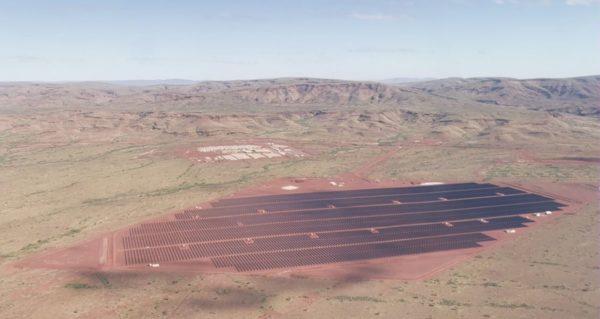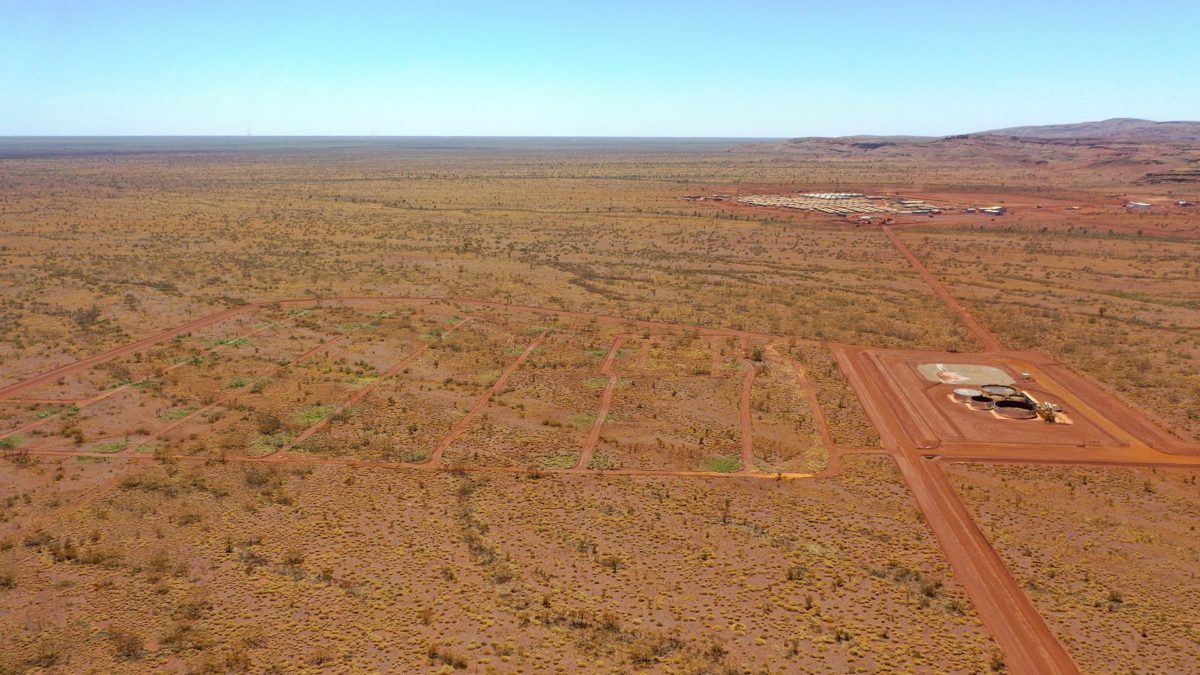Multinational miner Rio Tinto has unveiled the latest steps in its plan to power its Western Australian operations with renewable energy, announcing it will fund the construction of two 100 MW solar farms as well as 200 MWh of on-grid battery storage in the Pilbara by 2026.
Work on the first of the stand-alone 100 MW solar farms, which will require the installation of about 225,000 solar panels, is expected to commence in 2023 with Rio Tinto anticipating the project will be finished and in the commissioning phase by 2025. The second of the solar farms is due to come online a year later.
Initial funding for the first of the PV projects and associated transmission infrastructure has already been ticked off with final capital approval expected in the second quarter of 2023. The miner said it has also commenced talks with the WA government and traditional owners about securing the relevant approvals and required land on the Pilbara coast for the projects.
The new solar and storage is in addition to the 34 MW of PV already installed at Rio Tinto’s recently commissioned Gudai-Darri iron ore mine. The addition forms part of the mining giant’s previously announced plan to develop a 1 GW solar and wind power operation in the Pilbara as part of a global commitment to invest approximately USD 7.5 billion to halve emissions by the end of the decade.

The company said this will include significant investment in transmission infrastructure to support full decarbonisation of the Pilbara including electrification of the miner’s mobile and rail equipment beyond 2030, which is estimated to require up to 3 GW of installed renewable energy assets.
“The Pilbara is extremely well-positioned to take advantage of renewable power with land, access to people, and abundant wind and solar resources,” Rio Tinto Iron Ore Chief Executive Simon Trott said.
“We expect to invest around USD 3 billion to install renewable energy assets as well as transmission and storage upgrades in the Pilbara as part of our commitment to halve our emissions from the Pilbara by the end of this decade,” he said.
The new projects combined are expected to abate around 300,000 tonnes of carbon emissions, equivalent to a 10% reduction in total Scope 1 and 2 emissions from Rio Tinto’s iron ore business in the Pilbara based on 2021 levels.
Rio Tinto expects the projects will reduce its gas bill by approximately USD 55 million per annum at current prices and cut its gas consumption in the Pilbara by about 30%.
This content is protected by copyright and may not be reused. If you want to cooperate with us and would like to reuse some of our content, please contact: editors@pv-magazine.com.









2 comments
By submitting this form you agree to pv magazine using your data for the purposes of publishing your comment.
Your personal data will only be disclosed or otherwise transmitted to third parties for the purposes of spam filtering or if this is necessary for technical maintenance of the website. Any other transfer to third parties will not take place unless this is justified on the basis of applicable data protection regulations or if pv magazine is legally obliged to do so.
You may revoke this consent at any time with effect for the future, in which case your personal data will be deleted immediately. Otherwise, your data will be deleted if pv magazine has processed your request or the purpose of data storage is fulfilled.
Further information on data privacy can be found in our Data Protection Policy.